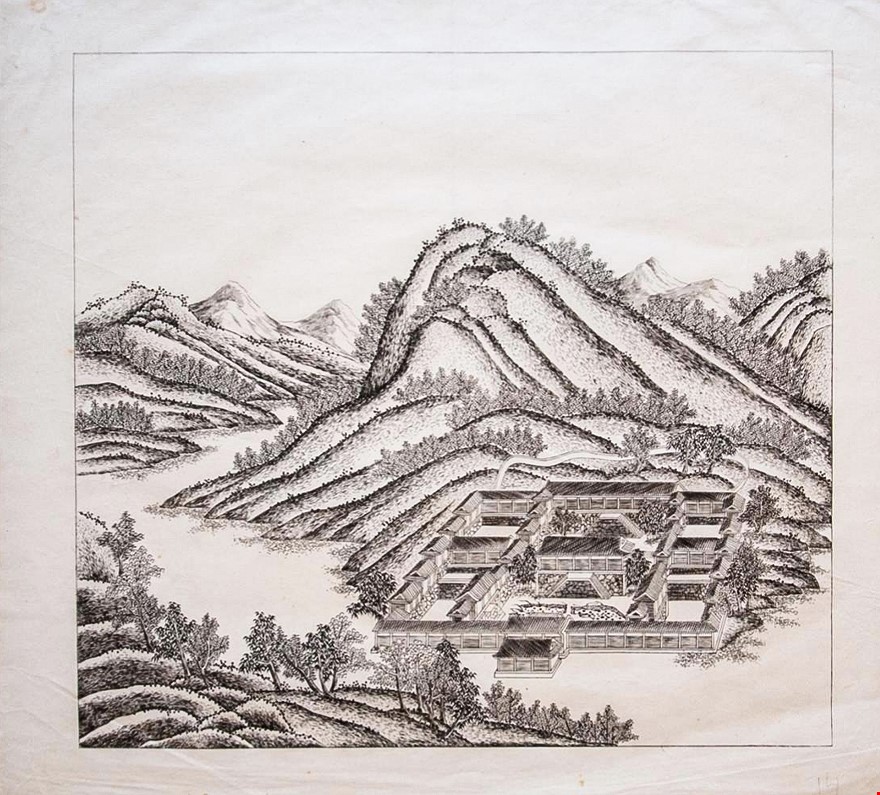Lihua banyue (Pear Blossoms Accompanied by the Moon) from the Bi shu shan zhuang series.
RIPA Father Matteo (1714.)
£8000.00
Please contact us in advance if you would like to view this book at our Curzon Street shop.
Copperplate print on Chinese paper, measuring ca. 32x29cm. Traces of central fold and minor creasing. Otherwise in fine condition. [Peking, Imperial Workshop],
Father Matteo Ripa (1682-1746), was sent to China as a missionary by the Propaganda Fide. Between 1711 and 1723 he worked as a painter and copper-engraver at the court of the Kangxi Emperor. Ripa accompanied the Emperor on several of the annual hunting expeditions during which they would inevitably visit the ‘Mountain Retreat to Escape the Heat’ (Bishu shanzhuang) a huge garden complex located on the Rehe River (Jehol, now Chengde) some 200km north of Peking. It functioned as a base for hunting expeditions as well as a palace for receiving visitors from Manchuria and the periphery of the empire (Lord Macartney also travelled there in 1793). Construction of the park commenced in 1703 and by 1712 some 36 scenes and palaces buildings had been built in an area covering around 2.2 square miles. Each of these scenes was named in groups of four characters.
The emperor decided to celebrate the occasion with a palace edition that illustrates each scene with a large woodcut accompanied by poetic descriptions from his brush. It was published under the title Yuzhi Bishu Shanzhuang sanshiliu jing shi (1712, with woodcuts by Shen Yu). He then asked Matteo Ripa to copy each of the woodcut scenes using copper plates. Ripa managed to complete the project just in time for the Emperor’s 60th birthday in 1713 and presented him with a set. It was the first time this technique had been used in China and it found the Emperor’s admiration. In the late 18th century, his grandson, the Qianlong Emperor, used the technique to produce a series of engravings celebrating victorious battle campaigns.
The present print shows the Lihua banyue (Pear Blossoms Accompanied by the Moon) group of buildings, which used to be located in the hills on the northern side of the Lishuyu valley where it was surrounded by a large number of pear trees. This large complex of buildings consisted of six halls with courtyards connected by ascending galleries. The Kangxi Emperor particularly enjoyed to view the pear blossoms in the moonlight and wrote a poem praising their extraordinary effect on him. This is the 14th view in the Bishu Shanzhuang series of thirty-six. (See: Strassberg/Whiteman: Thirty-six Views. The Kangxi Emperor’s Mountain Estate in Poetry and Prints. Washington, Dumbarton Oaks Research Library and Collection, 2016, p. 178)
Sets or individual prints of the Ripa engravings are exceedingly rare. They were only distributed amongst the close circle of the Emperor’s friends and family. We are only aware of one set having been offered at auction since 1945.
Stock Code: 244300




